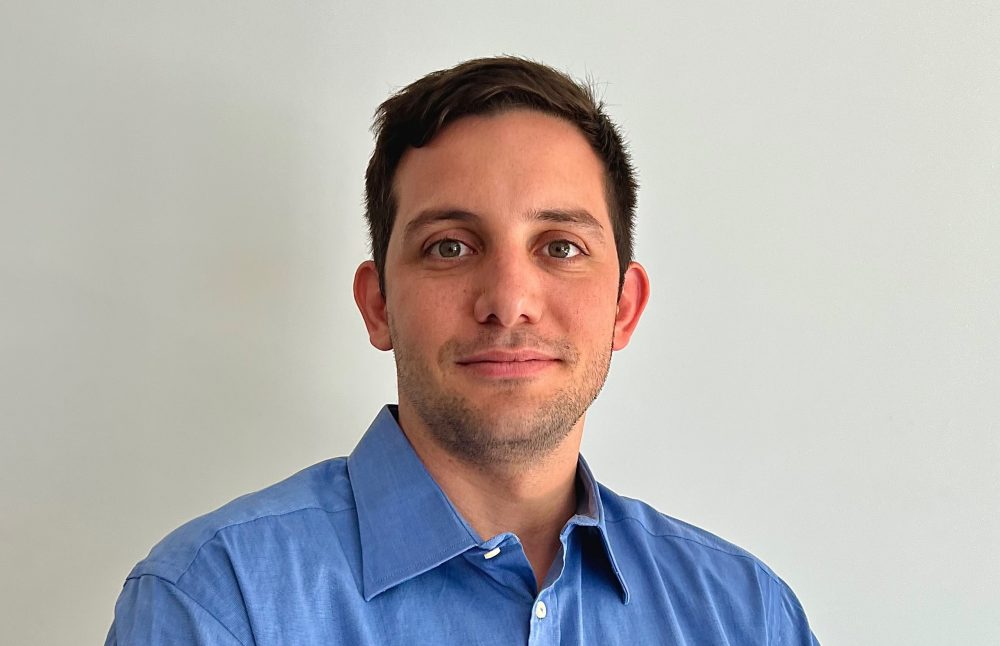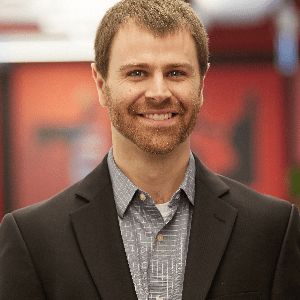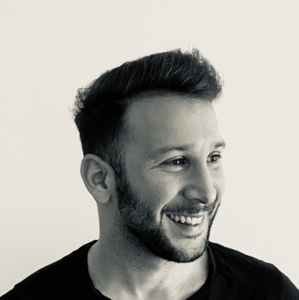I’m a computer engineer transformed into a ⚙️ passionate No Coder ⚙️. Reach out if you want to get introduced or learn more about the No Code world!
It’s not so complicated: Design thinking for scalability
About this episode
Are you interested in growing and scaling your business, with a simple everyday method?
If yes, then Design Thinking could help you do miracles.
In this episode, mentor Candelaria is walking us through the basic steps of the Design Thinking methodology, which is much easier, faster and profitable than what you think.
What they talked about:
- What Design Thinking is
- The different steps of the process
- Tools that can be used along the Design Thinking process
- How scalability is added in the equation
- The always beta mindset
And all this in less than 15 min!
Transcript
Candelaria Narvaez: Hey guys, I’m from Argentina. I live in the city of Buenos Aires here in Argentina. And I’ve been working in product growth and digital arena for 15 years now. I develop a lot of growth plans and scalability plans around the world with awesome teams in different industries. Like, for example, financial industries that were with crypto or with banking with fintech. And I also work with retail, retail, small business and real estate. And I been working with design thinking now for 10 years, maybe? Yeah, 10 years, the very first thing, the very first moment I work with design thinking was in an agency 10 years ago. So working with the development of an application for Puma Latino America, it was a very interesting introduction to the methodology. And from that on I, I tried to, to take this modality with all my teams and the projects I’ve been working with.
Spyros Tsoukalas: Cande, welcome to the GrowthMentor podcast. So can you explain to us what design thinking is from your perspective?
Candelaria Narvaez: Okay, awesome. So design thinking has been around, and thank you for the welcome. Design thinking has been around since the 70s. There’s other records that part of their methodology are taken from anthropology and sports and social arenas. But the methodology comes from the 70s from San Francisco, US US. And is a method to generate in innovation in products services, and the process that actually focus the effectiveness it has on understanding what why we are providing solutions to the real needs of our customers. So it’s a very customer centric solution and methodology to use around your projects. And future projects also.
Spyros Tsoukalas: They said it’s user centric it highly relates with all the discussions we have been having recently in this podcast. All mentors being hosted here, like they have been highlighting how important that is. So could you could you share with us something that we don’t know, or we can think about design thinking like something that is important, but like not well known, maybe?
Candelaria Narvaez: Well, I think that sometimes the same thing, and it’s only used at the very beginning of a project, or at the very beginning of the phase of a discovery of a project and as and think you can also use it in a profit in a project that it’s ongoing. I use this kind of rule of the 80, and then 20%. And that 20% is part of being able with your team to embrace these kinds of methodologies and run some little and small, perhaps, process of design thinking to upgrade or scale the project of their business you’re working with. So design thinking has five steps with its empathize, define, ideate, prototype and test. And I think that you can run that small presence, very small presence with a part of the business you have or a pair of product you are working with. All along the business and the rest of the of the product and services running out there in the world. So I think that’s not very known that it’s not only for the very first steps of an ideation or a discovery, but it can be also used in that like 20% of time to work around a better solution or as scalability of your own business.
Spyros Tsoukalas: Great, that’s something I didn’t know as well, actually. Could you walk us through the process briefly? Like, what are the steps?
Candelaria Narvaez: Absolutely. So the very first step is empathize. And here is really know who is your client, we have to be able to understand sympathize, and being able to understand what our client really needs, and sometimes we should take in consideration that clients think, say and do different things, right? Like they can say that they like the product, but actually they don’t use it, or they can think the product is for them but they don’t actually it’s for them. So it’s very important to generate here with some of the techniques you have a very good response volume to validate actually with data then if the client thinks says and do the same with your put our product third service out there. And some techniques you have to do, you can use here for empathize and be really customer centric, is a customer empathy map or mood boards. Or I, as I as I call it, the five, why’s like go very deep with your interviews up to five wise with the, to the customer regarding your product or your service in the interviews. And also you can pull up very like quick service. Or if you have the opportunity to do some, some video calls or arrange them to go to the to your offices or whatever do some role plays and see how they manage to use the product and service you are development for them. And there you have like everyone knows the Typeform or Google Forms or well pandemic that have the zoom or teams that actually work with with this kind of interviews or survey monkeys or Slack channels, we have a lot of different tools to do this, this degeneration of volume in the response. Then we go to the part of the define right so with all that information you have, you start defining some kind of strategy, but also not a strategy itself. But understanding what is like the real need and the real solution the customer had just tell you those empathize moment with with all the questions you have done in the in the surveys and etc. And then you come up with the ADH, which is a third step that has to do with. Okay, so we have an idea to resolve this pain. And this is very important when you start working on that prototype on that ideation moment. To turn the DBS into our concrete, you can start very much with a pencil and a piece of you know of just a paper and run, run the idea with a very draft, first draw picture of what you have in your mind you and your team have in your mind, and go and validate that prototype with whoever is going to work with you in Mill in it. So I saw many times in the past that you come through with a validate would come through with a prototype like teams or product come away with a very nice and sharp solution. And then they go with the IT teams and perhaps they say you know we can do that this in this amount of time. Or this is impossible because you have to do this and this and that. So in this part of prototyping, once you validate your idea and you start working with it, you must go out and see who can see this draft with whoever you’re going to build it. And, like be very you and your team should be very like, not enter into details right and bring everyone into the table. So I think that’s important in this step. And some tools you can work with there are storyboards. So journey maps are step by step, as they call it, or who and why are we doing this for and you can use I don’t know mural or Miro or Mockingbird. And in that situations, remember to pull up the teams are going to build that into the table. So be aware of time and be aware of everyone knowing what solution you have bring up from that empathize in that definition. To start building that prototype. Later, when you start building prototype, you have to run a test. So it is going to work right. So you have already empathize, you have already done those interviews, you came with an idea of what you can do to make easy life of your customers. See if you’re going to help them with that pain. You go to the teams who are going to build it with you and do a draft, do a prototype, work a little bit on that and that new solution. And now you have to run a test. So what is very important to hear also in this testing bar is it hasn’t doesn’t have to be like the very end version of it. It’s not an MVP, right? It’s not our first version is I call it sometimes testing version of this solution. And if you have the time and come back to this moment and sorry and arrive to this testing with one or two it’s even better because you can contrast those those solutions. And then you need to go back to the clients you have to speaking with or be very aware of how you are measuring that in person helps you have already done some some math and measurement methods, for example, that if you put a SD gate all around the journey of your client using that you can come up with an idea with that data, sorry, and run those tests. So when you run the once you run the test you have to be in here is very important, like be very aware and open to learn about the feedback your clients gonna give you. Because sometimes they come up with like, different solutions are really telling you that that’s not gonna work for them. All the data shows you that that’s even more complicated that what it was the very first time. And another thing is that you have to plan very good the feedback cycles you’re going to do, if you need one, two, or three, five feedback cycles. So also be very aware of the speed you need to work with. So you can apply and parenthesize the necessary changes with with your building teams. And then please always remember to thank the user for their time, try to make it no any rewards or anything you can’t provide to them from your products or services ways to thank them for their time. And if you’re going to do interviews, again here in this testing part is very important to remember that they’re different from the very first interviews you’ve done here. So now you are not in the like the research mode, but you need to see actually, if what you have come up with, it’s going to work with them or not. So very aware of the perception and the user experience, they happen with a new solution. Some tools you have there, again, is Google Forms are hot charge, which is a very common use, or also Google Optimize, you can do those small changes through Google Optimize and test them. I think Firebase have also like this, Google this, well, they have this Tag Manager also that is called as this guy and you can do some, some prototypes there and just really sit for a small amount of of users. So yeah, I think that’s the whole process very small, very quickly done. But really understanding the difference in and one of the points here is to really understand the difference in when you go back for feedback to clients, no going back for the same kind of feedback you have in the very first part. But now, it’s very turned into what you need to understand of the user of the new user experience and the perception.
Spyros Tsoukalas: Thanks for this, let’s say kind of short,
Candelaria Narvaez: Very short version.
Spyros Tsoukalas: So and that’s really the last question that comes to my mind is how we scalability, scalability related to this whole process?
Candelaria Narvaez: Okay, so I’m here comes the fun part, right? Remember that 20% and mentioned, what I have been learning through this years is that you really need at time to end it to all of the teams across an organization understand how your business can escape. And that is going to be done around some testing. So or prototypes you’re going to put out there. As I mentioned, you have tools to measure and prototype small things and small changes that can scale level that can scale your business. So scalability, actually, it’s going to come if everyone understands the goals and objectives and the KPIs of the business, if everyone understand their daily impact, in other words, they’re doing the right in their daily activities in the business results, everyone is really open to learn from their from their customers to understand that if you’re going around this small process of design thinking that 20% of time you have everyone should be aware to be very welcome of that feedback you have from your clients. And that’s what it’s called somehow like this always even better kind of thing that you are always aware that you can do a small tweaks into your product that bring you a more sustainable growth that actually becomes like this scalability in your charts in your business charts.
Spyros Tsoukalas: Cande, that thank you very much for sharing all those insights with us here. And I’m I’m really I’m really happy I actually learned about design thinking I had heard about it in the past but like not so recently so I had forgotten most of it. So thank you for walking us through all these know how that you have.
Candelaria Narvaez: Thank you very much. Sorry about my English I’m a native Spanish. I think I did the best. The best I can. Uh, but yeah, thank you very much for your time it was it was very interesting to speak to everyone if you need more detail, more information or anything. Yeah, you can find me GrowthMentor, which is a great platform so everyone should take a look about that.
Spyros Tsoukalas: Awesome. Enjoy your evening
In this episode


I’ve been working in Growth,Marketing and Product development for more than a decade,leading awesomes teams with data-driven strategies orientation.
Join the community
Enjoy the peace of mind that advice is always only one Zoom call away.

